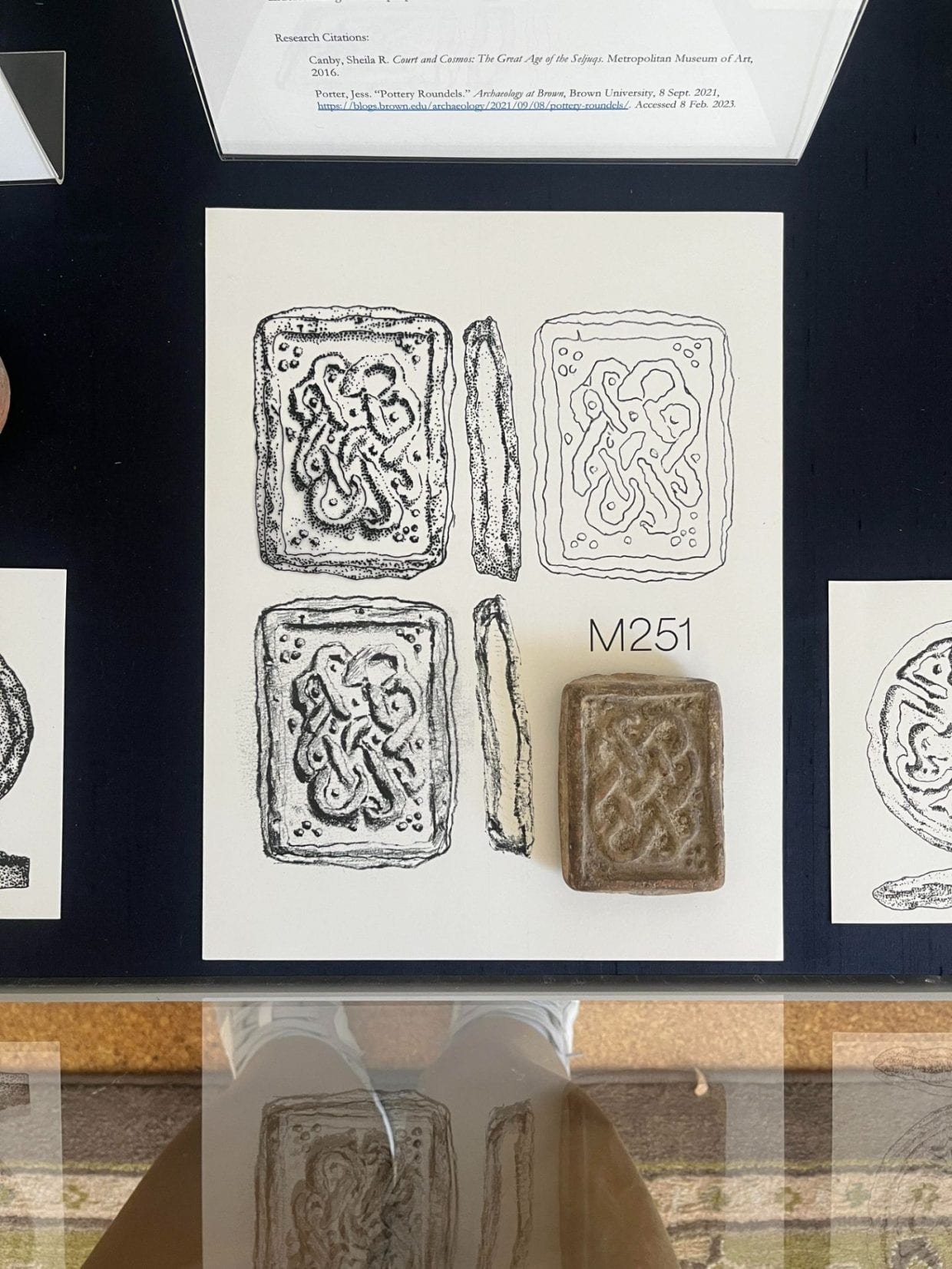I wanted to talk about one of the exhibits in Rhode Island Hall that’s in the room I work in everyday, Room 109 (the “Common Room”) on the first floor. This exhibit was set up by Jacob Davidson, a student at Rhode Island School of Design in Providence, RI (RISD), pursuing a degree in illustration (BFA 2023). Jacob is visual designer and he designed the drawings for the exhibit. Visitors viewing the exhibit can see that he is very talented in his arts and was able to represent these artifacts in full detail. This exhibit is composed of artifacts which Jacob believes are bath scrapers, which are used to slough off rough skin.
 In this exhibit, Jacob wrote a thorough explanation and description on most of the artifacts on display here. Who better to explain them than the man himself?
In this exhibit, Jacob wrote a thorough explanation and description on most of the artifacts on display here. Who better to explain them than the man himself?
This group of artifacts, which are part of the Joukowsky Institute’s collection, comes from 13th century Iran. There is little information about many of these pieces, however some of them are very likely to be bath scrapers “used to slough off rough skin” in hammams (public baths) (Canby, 108). In particular, objects m240 and m251 are almost certainly examples of bath scrapers, as they are very similar to identified examples at other collections, such as the Metropolitan Museum (ex: 26.102.7, 26.102.9). Similarities include the small circular adornments that surround the main designs, likely to create a continuously uneven texture for scraping, as well as being flattened rectangular or circular forms featuring animal or floral designs (108). Birds are a common motif on such items, and are an example of apotropaic inscriptions, which are seen commonly on utilitarian objects in Seljuq culture (171). This also makes sense for something used in a hammam, as these public baths served as places of religious ablution as well as physical hygienic maintenance (108).
As for the other objects here, while they could also be bath scrapers, I believe it is more likely that they served some other purpose. Some of them have much deeper cut designs with sharper edges, unlike the more rounded forms of the bath scrapers. This would lend itself less to scraping and more to creating a clear impression or stamp. These could have been used for pottery production or as bread stamps (242). Although we cannot know for certain, creating measured illustrations is a way of carefully observing these artifacts and picking out subtle visual information that could lead to a better understanding of their purpose.




Research Citations:
Canby, Sheila R. Court and Cosmos: The Great Age of the Seljuqs. Metropolitan Museum of Art, 2016.
Porter, Jess. “Pottery Roundels.” Archaeology at Brown, Brown University, 8 Sept. 2021. https://sites.brown.edu/jiaawexhibits/2021/09/08/pottery-roundels. Accessed 31 July 2023.
This blog entry was written by Alex Gomez, interning for Prepare RI, July 2023.
